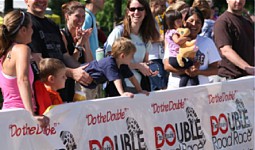Rich Benyo - Interview No. 13
Tuesday, January 31st, 2012
"Working at Runner's World helped my running Enormously"
Richard Benyo is the editor of Marathon & Beyond, a bimonthly magazine. He is the author of more than 20 books, most of them in the areas of fitness, health, and running. His newest running book is Timeless Running Wisdom. He was a newspaper editor (1968-72), editor of Stock Car Racing Magazine (1972-77), executive editor of Runner’s World Magazine (1977-84), and running and fitness columnist for the San Francisco Chronicle (1985-90).
Rich is the veteran of 37 marathons and in 1989 along with running partner Tom Crawford, became the first maniacs to run from Badwater in Death Valley to the peak of Mt. Whitney and back, a distance of 300 miles.
Rich is the president of the board and co-race director of the Napa Valley Marathon and has been on the board of directors since 1985. He is also the 1998 winner of the RRCA journalist of the year award.
In early 2005 RunningUSA inducted Rich into its Hall of Champions. Rich and his wife Rhonda currently live in Forestville, Sonoma County, California; in their spare time, they are attempting to learn to sail on the San Francisco Bay.
Rich and I first spoke in 1977. I was looking for a special person to take over the head editorial spot at Runner's World. After three hours I knew I found the right guy. I told Rich the next step would be to come to Mountain View to close the deal. He did and we worked together for seven years. As a bonus we became good friends. It was a sad day when I needed to sell the magazine in 1984. We had to go our own ways until we crossed paths two years ago in Forestville. We spent over three hours together having dinner and drinking lots of wine. We will be stopping by en route to the Ave of the Giants again this year too. (Interview by Bob Anderson)
1. When did you start writing? What was the first article you had published?
My cousin and I started—and wrote for—a little school newspaper at St. Joseph’s School in Jim Thorpe, PA where we grew up. We started the paper in the seventh grade. It lasted two issues. When we wrote an editorial for the third issue criticizing how the basketball coach picked his team, we were shut down by the nuns. In high school I published Galactic Outpost, a science-fiction fanzine. My first article published in a professional magazine came in 1968 when I wrote a story on gun safety for the Pennsylvania Game News; that was the same time I began working for the Times-News, a local newspaper in central-eastern Pennsylvania.
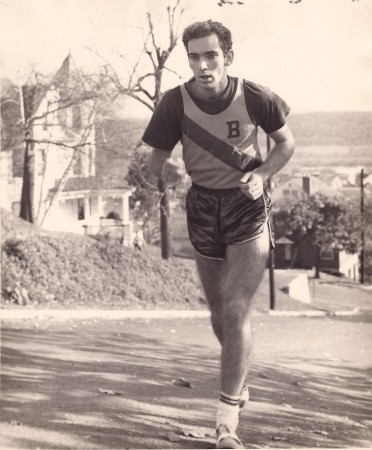 2. When and why did you get interested in running?
2. When and why did you get interested in running?
My interest in running came as a means of self-preservation. I wasn’t especially fast, but I found that if I could get a three-step advantage on the bigger kids, I could out-last them and thereby avoid getting beaten up. We did not have track in high school, although we did have an annual intramural track meet where I ran the longest distance offered: a sort of 5/8th of a mile: two laps around the rutted road that circled the football field. I ran cross-country in college.
3. What was your life like before joining Runner’s World in 1977?
As editor of Stock Car Racing Magazine, I spent more than half of my weekends on the road following the stock car circuit, smoking cigars and drinking beer and inhaling exhaust fumes. I managed to put on some serious weight, but by 1977 I’d begun losing weight through a combination of better diet and getting in some jogging three or four days a week—when I wasn’t on the road.
4. How different would your life be now if you had stayed at Stock Car Racing Magazine?
Although I still follow auto racing, I suspect that spending so many decades doing the same thing so intently would have eventually gotten to me.
5. How did you land the executive editor job at Runner’s World?
While I was covering stock car racing, I met Hal Higdon, who besides doing a lot of writing about running, was also writing auto racing books, such as Six Seconds to Glory and Showdown at Daytona. I used to buy stories from Hal for Stock Car Racing Magazine and we began to hang around together when our paths crossed at Daytona or Martinsville or Talladega. He knew that I’d ran in college and when he heard that an opening was coming at Runner’s World, he put in a good word for me. I interviewed with Bob Anderson over the phone—a three-hour phone conversation, as I recall; I had to excuse myself at one point to take a bathroom break—and was later flown to Mountain View for a face-to-face interview, where I recall we drank a lot of wine.
 Photo: Passing the baton to Bob Anderson in the Corporate Cup Relays - this was one of the events created by Bob.
Photo: Passing the baton to Bob Anderson in the Corporate Cup Relays - this was one of the events created by Bob.
6. What was it like working at Runner’s World?
It was the best of times, it was the worst of times. Running was growing so rapidly and it was exciting being in the middle of all that, but at the same time, the deadlines we had to meet to keep up with the growth of the magazine were exhausting. I can still remember the last week in 1978 when we were all involved in putting on National Running Week while at the same time trying to get out the next edition of the magazine. We were spending the days at the seminars and out running with our VIP guests (I remember I ran 97 miles that week, my largest running week until I began training for Death Valley 10 years later) and the nights at the office trying to get the magazine put to bed. Fortunately we were a lot younger then; to try something like that today would be to commit suicide.
7. How about your personal running at that time (1977-84)?
I started out at the Sunday morning Fun Runs that RW put on. I remember keying off a certain guy who always showed up, and gradually, week by week, finishing closer and closer to him until I eventually beat him. From there I kind of did the typical thing: I raced way too much. I did eight marathons and two 50-milers between April and December of 1978. Working at the magazine helped my running enormously, both because we put on the Corporate Cup, so we had our team that went to the track every Thursday afternoon for speed work, and it was always easy to find somebody to run with. The most fulfilling point in that process was in October of 1980 when I finally broke three hours in the marathon.
8. Did you think rating running shoes was a good idea?
On many levels it was. The running shoe companies were trying all sorts of things to improve their shoes in those days—some of which worked, some of which did not. As an example, Puma came out with a shoe with little round nubs on the soles that were fine in dry weather, but the first time it rained, it was like running on ice skates. By rating the shoes, the magazine was doing a lot of research the individual runner could not afford the time or the money to do. I think it inspired many of the shoe companies to improve the breed. But it was sure a lot of work behind the scenes to put together the annual shoe issue.

Photo: Running with Hal Higdon in the Boston Marathon in 1978.
9. Nike pulled out $1 million of advertising in RW because they didn’t like the way their shoes were ranked. What was your take on this?
The whole thing seemed, at the time, to be incredibly silly. Nike didn’t like how their shoes were ranked in the annual shoe survey and claimed that we had “fixed” the results to ding them, which makes absolutely no sense. If we were going to “fix” the results, we would have “fixed” the results in Nike’s favor, because at the time Nike was by far our largest advertiser. Why would we plot to screw our largest advertiser? Hell, Blue Ribbon Sports (the forerunner of Nike) was RW’s very first advertiser.
10. What was your involvement with Runner’s World after Rodale Press purchased the magazine?
After November of 1984, I was no longer involved in the magazine, other than once in a while to drop Amby Burfoot a note.
11. When did you run your first marathon? Which race was it? Did you enjoy the experience?
The first marathon I ran was Boston in 1978. I didn’t intend to run it. I was in training to run the 1978 Avenue of the Giants as my first marathon; Avenue was scheduled two weeks after Boston. But while we were at Boston, doing the magazine’s annual Open House (which predated marathon expos), Larry Tunis, our advertising director, who had done several marathons by that point, talked me into jumping into Boston and running it with him. Hal Higdon was there and he gave me some advice about how to pace myself, but Hal was nursing a bad Achilles tendon. I started at the back of the field and dropped Larry at Cleveland Circle and caught a hobbling Hal around the Citgo sign. I did a 3:29 that day, and remember the experience as fulfilling—but dumb. I ran Avenue two weeks later in almost the same exact time, but aching all over because I didn’t give myself time to come back from Boston.
12. When and why did you become interested in ultras?
Ultras just seemed to be the next step. And they were fun in a perverted sort of way. And there were such wonderfully eccentric characters doing ultras. I did two 50s in 1978. One was the AAU 50-Mile Championships on the track at Santa Monica, which I dropped out of around 35 miles, after having gotten virtually no sleep the night before. And the second was the Cow Mountain 50 that fall in Ukiah, California, which was organized by Gordy Ainsleigh, who originated the Western States 100. I recall we camped out at the lake Friday night and cooked spaghetti over a camp fire; we started 45 minutes before the horses and Gordy had dumped the Body Punch (RW’s version of Gatorade) into horse troughs along the way and we had to move horse whiskers out of the way so we could dip our bottles in. When the race was over, they had a big old hoe-down with a country and western band where they served steaks as big as man-hole covers. Gordy was into ceramics at the time, and he made Studrunner awards for anyone who finished the race under 10 hours; I made it by 90 seconds. I still have my Studrunner award; it’s a giant ceramic dildo.
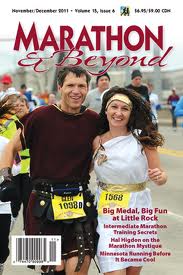 13. Tell us about your Marathon & Beyond Magazine. When and why did you start it?
13. Tell us about your Marathon & Beyond Magazine. When and why did you start it?
It’s all Runner’s World’s fault. Back in those crazy years RW used to do its annual marathon issue in January. But marathoning became so huge that the January issue could no longer hold it all, so it became a two-part special section that ran in the January and February issue. As a way of releasing some of the stress of all those pages about marathoning, I had the bright idea to propose we do a quarterly magazine dedicated to marathoning, The Marathoner. Bob Anderson, being a marathon junkie himself, thought that was a swell idea, so in the spring of 1978 The Marathoner debuted. Unfortunately, around the same time, we also launched On the Run, a fortnightly tabloid that was supposed to be like the Rolling Stone of running. Both magazines were joined at the hip as far as the profit and loss statements went. On the Run, from the start, was expensive to do (It required a whole separate staff from RW’s, while The Marathoner was done using RW staff.), and eventually had to be deep-sixed and The Marathoner sunk with it.
Marathon & Beyond is the bastard child of The Marathoner. I’d always been deeply disappointed that The Marathoner died (It went through only five issues.), so when I had the opportunity to pitch Marathon & Beyond to Human Kinetics in 1996, I did that enthusiastically. The first issue came out in January of 1997 but then a similar thing to what happened at RW happened at HK: two of the major money-earners in their journals division (both dedicated to strength training) were pulled and that had a profound influence on the bottom line at HK, so they decided to kill M&B at the end of 1998, but Jan Seeley (then the managing editor) and I decided to take over the magazine and keep it going, which we’ve managed to do all these years. So the bastard son of The Marathoner, lives on…
14. You personally have done some amazing feats. Which one stands out in your mind and why?
That would have to be Tom Crawford and I being the first crazies to run from Badwater in Death Valley (lowest point in the Western Hemisphere and hottest spot on Earth) to the peak of Mt. Whitney (at 14,454’, the highest point in the Lower 48) and back, roughly 300 miles. I had been in Death Valley to cover the early attempts at running the one-way course, and became fascinated by it. At a picnic at Crawford’s, where way too much beer flowed, I made the observation that once you’ve run the one-way course, you have to come down off the mountain on foot of Whitney Portal, so you’ve already done 12 miles of the return trip, so why not just keep going? Crawford and I decided, fueled by too much brew, that the following summer, we’d be the first to ever do the out-and-back. Unfortunately, some of the other people overheard us, so we had to follow through and do it—which we did in the summer of 1989. And which I did again in 1991 and 1992. None too bright.
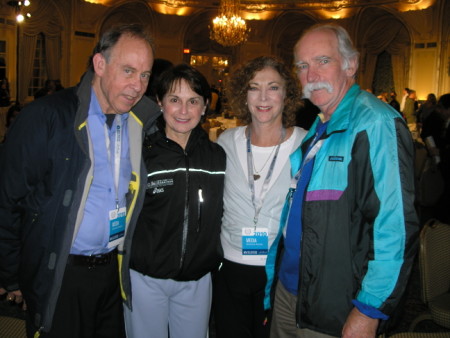
Photo: Rich and Rhonda (black jacket) at a recent race expo.
15. How involved is your wife Rhonda in the running world?
She’s very involved. She manages to train wisely and well and typically qualifies for Boston every year. But she was led astray back in the good old days. She did triathlons in the early days of that sport, she did ultras (Western States 100), and she followed in the crazy footsteps of Crawford and Benyo when, in 1995, she became the first woman to do the Death Valley 300. She’s also been the medical coordinator at the Napa Valley Marathon for more than a dozen years, and she’s the medical officer at the Red Star Ridge (16.5 miles) aid station of the Western States 100.
Comments and Feedback

Rich, I really lik your interview. You have done so much for running over the last 35 years. I am glad to have you as a friend. We will see you at your place in May...
Bob Anderson 2/1/12 12:20 pm
 Rich, I really lik your interview. You have done so much for running over the last 35 years. I am glad to have you as a friend. We will see you at your place in May...
Rich, I really lik your interview. You have done so much for running over the last 35 years. I am glad to have you as a friend. We will see you at your place in May...









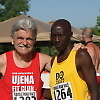
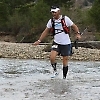
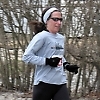

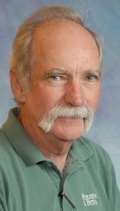
 2. When and why did you get interested in running?
2. When and why did you get interested in running? Photo: Passing the baton to Bob Anderson in the Corporate Cup Relays - this was one of the events created by Bob.
Photo: Passing the baton to Bob Anderson in the Corporate Cup Relays - this was one of the events created by Bob.
 13. Tell us about your Marathon & Beyond Magazine. When and why did you start it?
13. Tell us about your Marathon & Beyond Magazine. When and why did you start it?
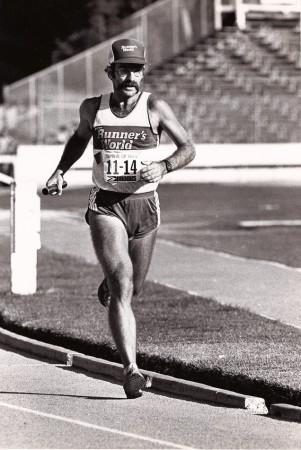
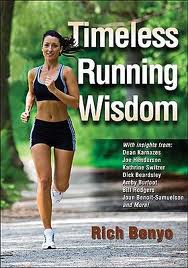 Photo: Rich's latest running book.
Photo: Rich's latest running book.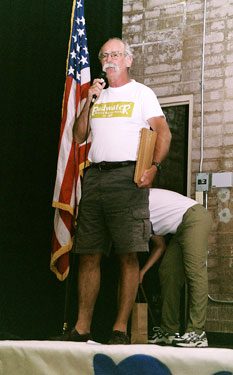 27. You are involved with the Napa Valley Marathon (as board president and co-race director). How has this marathon changed over the years?
27. You are involved with the Napa Valley Marathon (as board president and co-race director). How has this marathon changed over the years?